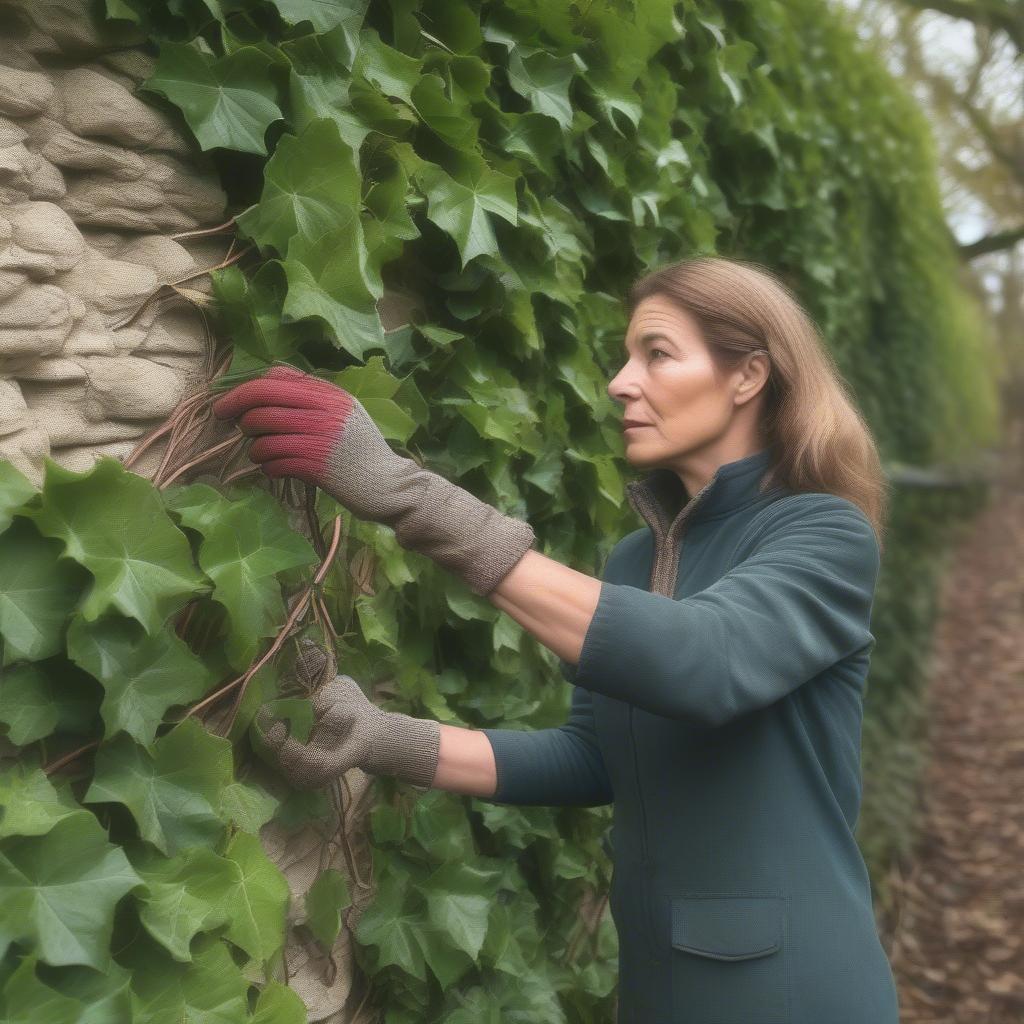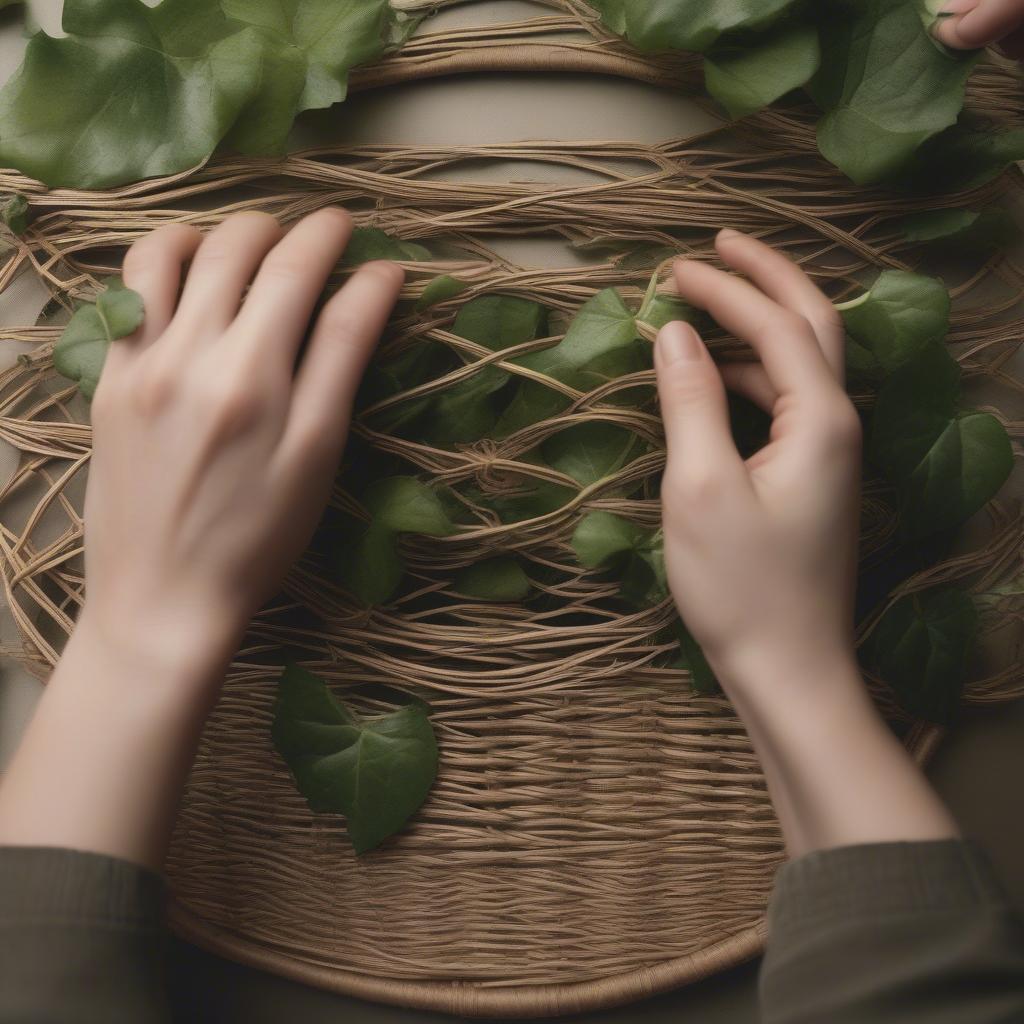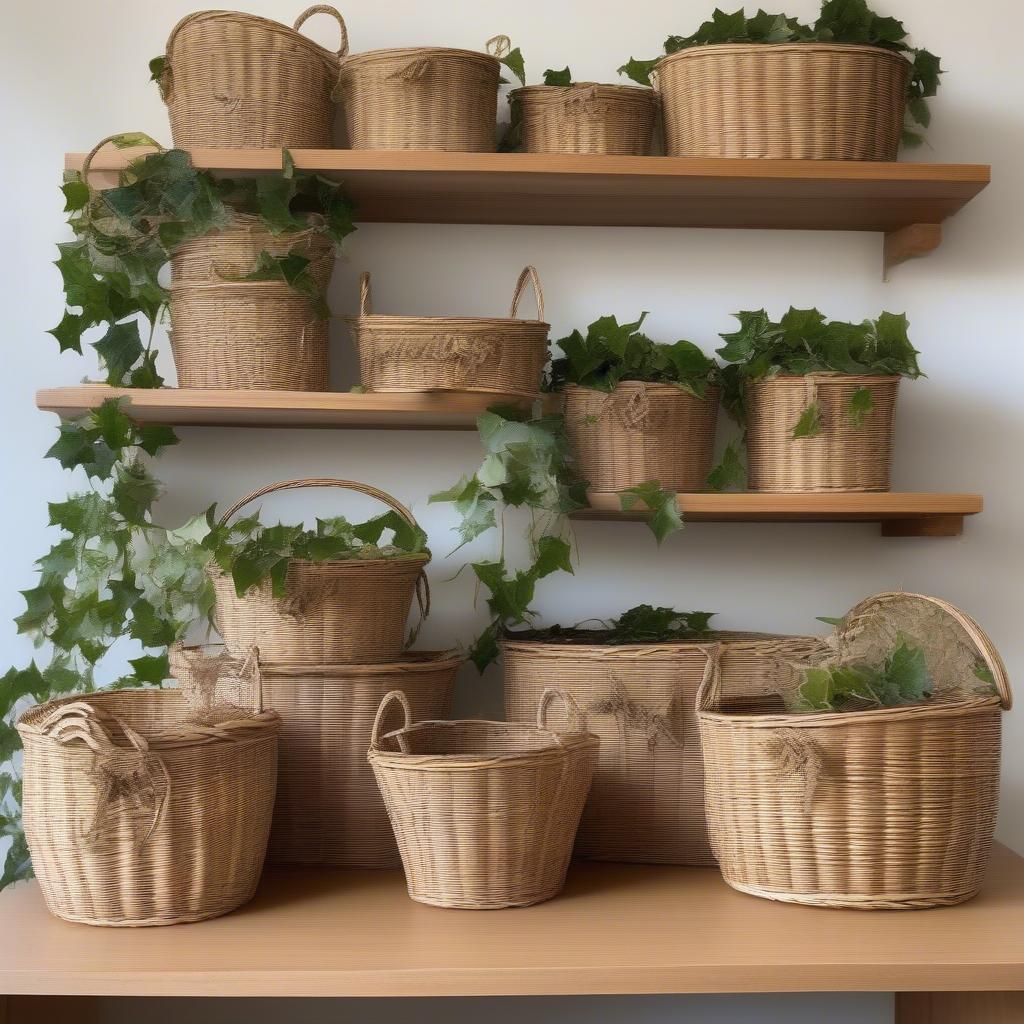Basket Weaving
English Ivy Basket Weaving: A Guide to Crafting with Nature
English Ivy Basket Weaving offers a unique way to connect with nature and create beautiful, functional art. From simple coasters to intricate hanging baskets, the pliable yet sturdy vines of English ivy provide a readily available and sustainable material for weaving. This guide will delve into the world of English ivy basketry, providing tips, techniques, and inspiration for both beginners and seasoned weavers.
Gathering and Preparing English Ivy for Weaving
 Gathering English Ivy for Basketry: A woman carefully cuts English ivy vines from a wall, ensuring she takes only what she needs and avoids damaging the plant.
Gathering English Ivy for Basketry: A woman carefully cuts English ivy vines from a wall, ensuring she takes only what she needs and avoids damaging the plant.
Before you begin weaving, you’ll need to gather and prepare your English ivy. The best time to harvest is in the fall or winter, when the vines are dormant and less likely to break. Look for long, healthy vines that are at least ¼ inch thick. Cut the vines cleanly with pruning shears, avoiding tearing or ripping.
After harvesting, soak the vines in warm water for several hours, or even overnight. This will make them more pliable and easier to work with. Once soaked, you can begin to remove the leaves. A simple way to do this is to run a blunt knife or your thumb along the stem.
Basic English Ivy Basket Weaving Techniques
 English Ivy Basket Weaving Basics: Close-up of hands weaving English ivy vines, demonstrating the basic over-under technique.
English Ivy Basket Weaving Basics: Close-up of hands weaving English ivy vines, demonstrating the basic over-under technique.
There are several basic weaving techniques you’ll need to master for English ivy basketry. The most common is the over-under weave, also known as the randing technique. This involves weaving the vines over and under each other in a consistent pattern, creating a sturdy base.
Another important technique is coiling. This involves wrapping the ivy vines around a central core, gradually building up the sides of the basket. Coiling can create beautiful, spiraling patterns and allows for more intricate designs.
Once you’ve mastered these basic techniques, you can experiment with more complex patterns and designs. Twining, plaiting, and looping are just a few examples.
Creating an English Ivy Basket: A Step-by-Step Guide
To create a simple English Ivy basket, start by forming a base. Create a circular frame by bending several long vines into a loop and securing the ends with twine.
- Create the Base: Form a circular frame with thick ivy vines.
- Weave the Sides: Begin the randing technique, weaving thinner vines over and under the frame.
- Shape the Basket: As you weave, gently shape the basket into the desired form.
- Finish the Rim: Once you reach the desired height, fold the remaining vines over the rim to create a neat finish.
- Secure the Ends: Tuck in and secure loose ends with twine or small pieces of ivy.
Caring for Your English Ivy Baskets
 Caring for English Ivy Baskets: Several finished English ivy baskets displayed in a well-lit room.
Caring for English Ivy Baskets: Several finished English ivy baskets displayed in a well-lit room.
English ivy baskets are relatively easy to care for. Avoid placing them in direct sunlight, which can cause the vines to dry out and become brittle. Dust regularly with a soft cloth or brush. If your basket becomes dirty, you can wipe it down with a damp cloth.
“English ivy is a surprisingly versatile material,” says renowned basket weaver, Eliza Cartwright. “Its flexibility and strength make it ideal for creating a wide range of basketry projects, from functional storage solutions to decorative pieces.”
Is English Ivy Poisonous When Weaving?
While English ivy is a beautiful and readily available material, it’s essential to handle it with care. The sap can cause skin irritation in some individuals, so it’s advisable to wear gloves while working with it. “Always wash your hands thoroughly after handling English ivy,” advises Eliza Cartwright. “While the toxicity is generally mild, it’s always better to be safe than sorry.”
Conclusion
English ivy basket weaving is a rewarding craft that allows you to connect with nature and create unique, handcrafted items. With a little practice and patience, you can transform ordinary ivy vines into beautiful and functional works of art. So, gather your materials, explore different techniques, and let your creativity blossom!
FAQ
- Where can I find English ivy for weaving? English ivy can be found growing wild in many areas, or you can purchase it from garden centers.
- What tools do I need for English ivy basket weaving? Basic tools include pruning shears, a soaking container, a blunt knife, and twine.
- How long does it take to weave an English ivy basket? The time required varies depending on the size and complexity of the basket.
- Can I use dried English ivy for weaving? Dried ivy can be used, but it will be more brittle and difficult to work with. Soaking it will help restore some pliability.
- Are English ivy baskets durable? With proper care, English ivy baskets can last for many years.
- Can I sell my English ivy baskets? Certainly! Handcrafted items are often highly sought after.
- Where can I find more information on English ivy basket weaving? Check out online resources, books, and local craft workshops for further guidance.
When you need assistance, contact us at Hanoi, Vietnam or Tech Avenue, Suite 12, San Francisco, CA 94105, USA. We have a 24/7 customer support team.
